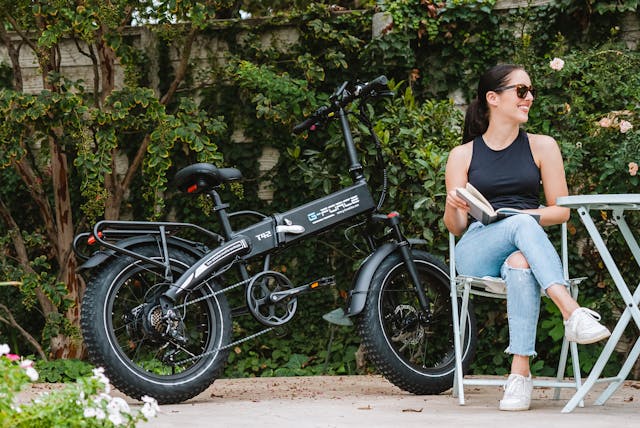Ebike Rules of the Road: Where Can I Ride My Ebike?
Last Updated on July 4, 2025 by Kristina
Electric bikes, also known as e-bikes, are revolutionizing how we travel. These bikes come with electric motors that give you a helpful boost, making it easier to ride up hills, cover longer distances, and even allowing people who might struggle with traditional biking due to fitness concerns to get in on the action.
E-bike sales are soaring for a good reason. They’re eco-friendly, convenient, and perfect for avoiding sweaty commutes. However, with their rise in popularity comes the question: Where can I legally ride my e-bike?
Unfortunately, the answer is not straightforward. E-bike laws differ significantly depending on where you live, which can make it confusing. In this post, we will break down everything you need to know, including the different types of e-bikes, helmet and age requirements, as well as registration and insurance rules across the United States.
Key Takeaways
- E-bike laws vary by state and even by city.
- Always check your local rules before riding an e-bike.
- Some states require helmets; others don’t.
- Age restrictions can vary, so check your local laws.
- In some areas, e-bikes may need to be registered.
- E-bike insurance is optional, but it can be a smart choice.
- Follow all traffic laws and ride safely.
E-Bike Basics: What You Need to Know
Understanding the rules around e-bikes starts with understanding their classifications. The Consumer Product Safety Commission (CPSC) has established three main classes of e-bikes:
- Class 1: These bikes provide pedal assist only and stop assisting once you reach 20 mph.
- Class 2: These bikes also provide pedal assist, but they can be powered by a throttle, meaning you can ride without pedaling up to 20 mph.
- Class 3: These bikes offer pedal assist that can take you up to 28 mph and may also have a throttle option.
However, these classifications are just a guideline for manufacturers. States and localities can make their own laws, which is where things get a little tricky.
State-by-State Rules
Since each state sets its own laws, here’s an overview of what to look out for in each state, including helmet laws, age restrictions, and where you can ride. We’ve compiled the most important rules into a helpful chart below.
E-Bike Law Overview for US States:
| State | Helmet Required? | Minimum Age | Registration/Permit | Insurance | Notes |
|---|---|---|---|---|---|
| Alabama | Yes | 15 | No | Not required | Must wear helmet on public roads. |
| California | Yes | 16 | No | Not required | Class 3 bikes restricted to certain areas. |
| Florida | No | 16 | No | Not required | E-bikes allowed on roads and bike paths. |
| New York | Yes | 14 | No | Not required | No throttle use on bike lanes. |
| Texas | Yes | 15 | No | Not required | Local governments can set further rules. |
| Colorado | Yes | 16 | No | Not required | Class 3 bikes require helmet for minors. |
| Washington | Yes | 16 | No | Not required | Can’t use e-bikes on hiking trails. |
| Ohio | Yes | 16 | No | Not required | Speed limits may vary by area. |
| Arizona | Yes | 14 | No | Not required | Helmet laws for Class 3 bikes. |
| Nevada | Yes | 16 | No | Not required | May require bike path access permits. |
(Note: This is not an exhaustive list. Check with local authorities for specific rules.)
Helmet Laws
Many states require helmets when riding e-bikes, but the rules can differ. Always check your local laws before riding. While some states enforce helmet laws for all riders, others may only apply these rules to younger riders. For example, California mandates helmets for all cyclists, while Florida only requires helmets for minors.
For more on choosing the best helmets for e-bike riders, check out our post on top helmets for e-bike riders.
Age Restrictions
The minimum age to operate an e-bike varies from state to state, and sometimes even by the class of e-bike. For instance, some states restrict Class 3 e-bikes to riders aged 16 and above due to their higher speeds. Always verify local laws to make sure you meet the age requirement.
Registration & Permits
In most cases, you won’t need to register your e-bike. However, some states, such as California, require registration for Class 3 e-bikes. It’s important to check whether any local registration or permit rules apply in your area.
For more details on e-bike registration, check out our guide on whether e-bikes need to be registered.
E-Bike Insurance
Insurance isn’t required for e-bikes in most states, but it’s worth considering. Accidents happen, and e-bike insurance can protect against theft, damage, or injury. While you might not be required to get insurance, it’s a wise choice if you have a more expensive bike or frequently ride in busy areas.
Learn more about the benefits of e-bike insurance in our post on e-bike insurance options.
E-Bike Classifications and Where You Can Ride
The type of e-bike you have can affect where you can ride. Let’s break down the differences:
- Class 1: These are often treated the same as regular bicycles. They can be used on bike paths and roads. No registration or special permits are usually required.
- Class 2: These bikes may be subject to more restrictions, especially if they have throttle capabilities. Some bike paths or parks might limit or prohibit Class 2 e-bikes, so always check local signage.
- Class 3: These faster e-bikes (up to 28 mph) may be treated as motorized vehicles in some areas. Some states require registration, and Class 3 riders may need a driver’s license or permit. They’re also typically restricted from certain bike paths.
Modifications & Legal Limits
Modifying your e-bike might sound fun, but it’s important to be cautious. Modifying the motor or increasing the speed can push your bike out of its legal classification, potentially making it illegal to ride in some areas. Always ensure that any changes you make comply with local regulations.
Riding on Public Transit
Want to take your e-bike on public transport? Many transit systems allow e-bikes, but they might have specific rules or size restrictions. It’s a good idea to check with your local bus or train service to find out about their e-bike policies.
Safety Tips for E-Bike Riders
While laws vary, safety should always be your number one concern. Here are a few tips to keep you safe:
- Wear Your Helmet: No matter the law, helmets significantly reduce the risk of serious injury in case of an accident.
- Use Lights: Equip your e-bike with a front light and rear taillight for visibility, especially at night.
- Follow Traffic Rules: E-bikes must obey all traffic laws, just like regular bicycles.
- Stay Sober: Always ride with full attention. Avoid riding under the influence of alcohol or drugs.
FAQs
Safety gear requirements vary by location, but a helmet is the most common. Some areas may also require additional safety gear like reflective clothing or knee pads. Always check local laws.
Yes, e-bikes are generally allowed on bike lanes, but local rules may apply. Always follow signs, and check for specific regulations in your area.
Yes, in many areas, speed limits for e-bikes range between 20 to 28 mph, depending on the class of the e-bike. Be sure to check your local rules for the exact speed limits.
For most e-bikes, no permit or license is required. However, some areas may require a permit for Class 3 e-bikes due to their higher speeds. Always check local laws.
It’s generally not recommended to modify your e-bike, as it could take it out of its legal classification and make it illegal to ride in some areas. Check your local regulations before making any changes.
Conclusion: Ride Safe and Legally
E-bikes are a fantastic and eco-friendly way to travel. But to ensure a smooth ride, you must stay informed about your local laws. By understanding the rules for helmets, age restrictions, and where you can ride, you’ll ensure a safe and legal experience every time.
So, before you hit the road on your e-bike, take a moment to review local laws, check the helmet and age requirements, and always remember to ride responsibly.
Have any questions or tips to share? Drop a comment below and let’s keep the conversation going!
Safe riding!
You Might Also Like
External Sources
https://www.federalregister.gov/documents/2020/11/02/2020-22129/general-provisions-electric-bicycles
https://ebikes.org/ebike-classes-state-laws/
Kristina is not just an enthusiast but a true authority on electric bikes. Nestled in the coastal beauty of Virginia, Kristina has found the perfect backdrop for her passion for electric biking. As a dedicated wife and homeschooling mom, her life revolves around family, faith, and the thrill of adventure.
Originally hailing from Ohio, Kristina's journey with electric bikes began as a curiosity and quickly evolved into a deep expertise. Her blog is a testament to her love for electric biking, combining her fascination for eco-friendly transportation with her coastal lifestyle.
When she's not cruising the beach on her electric bike, you'll find Kristina indulging in her other loves: long walks along the shore, getting lost in a good book, and cherishing moments with her loved ones. With a heart as big as her love for animals, especially cats, Kristina brings a unique perspective to the electric bike world, grounded in her strong faith in God and her dedication to a sustainable lifestyle.
Through her blog, Kristina shares her extensive knowledge of electric bikes, offering valuable insights, tips, and recommendations to fellow enthusiasts. Whether you're a seasoned rider or a newcomer to the electric bike scene, Kristina's blog is your go-to source for all things electric biking, fueled by her passion, expertise, and the scenic beauty of coastal Virginia.

